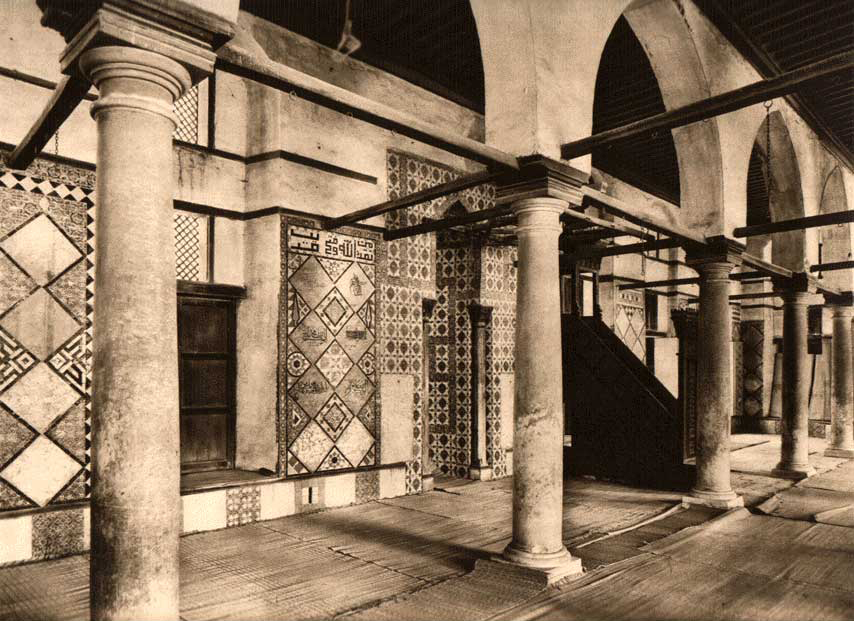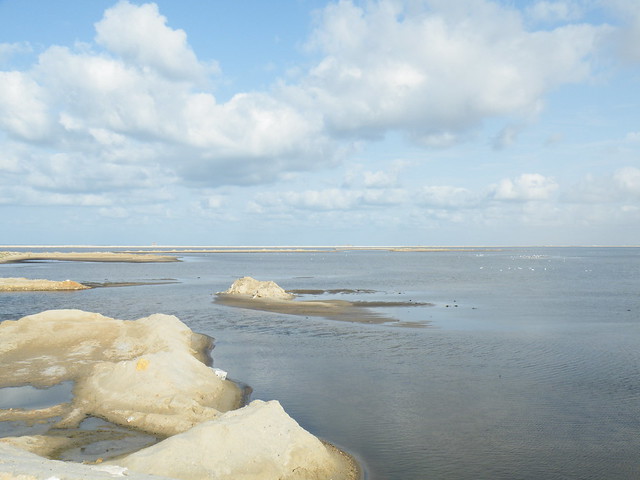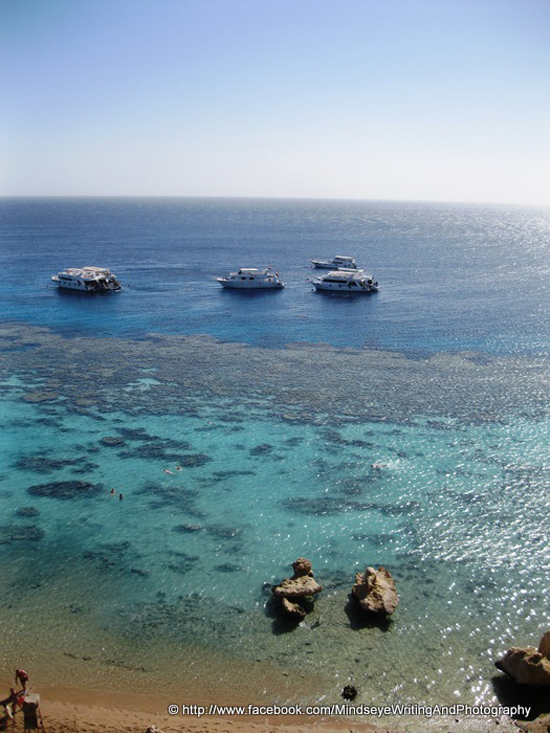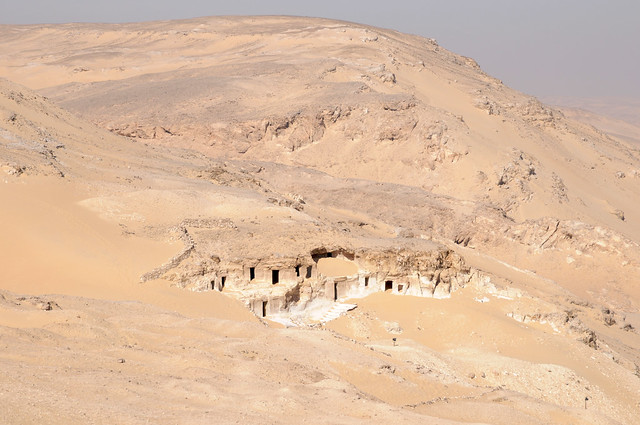By Islam El Shazly and Susan Ryan,
You would be hard pressed to find a tourist in Egypt who hasn’t been to the Pyramids or to Sharm El-Sheikh, but finding the odd tourist who is willing to get off the beaten path and separate from the crowds to discover where the road would take them or what they will find, that’s a totally different matter.
It is arguable that the best way to discover a city, or a country, is to actually get lost! We’re not suggesting that you get rid of the map book altogether, but we’re thinking that maybe you need to open up to the possibilities.
In this edition we have two fan favourites, Sharm (by our series contributor Susan Ryan) and the Pyramids of Giza, but only as a general point of interest, otherwise you will need days to properly enjoy what they have to offer, and we will zoom in on more activities and things to see in both of them at a later stage. We also have more birdwatching, this time in North Sinai, a place that is not on over 90 per cent of travel agencies lists, and two charming cities, that you can discover at your discretion.
Enjoy!
21. Zaraniq Protected Area and El-Bardwaeel Marsh, North Sinai
The location of Egypt as the land bridge between Africa and Asia, and being centrally located between the three continents of the old world, made it a unique location for migrating birds to find food and sanctuary in their long summer and winter migrations, one such stopover is the Zaraniq Protected Area and El-Bardaweel March, a 250 km2 protected wetland area and a natural restricted area for birds, 35 km west of Al-Arish in North Sinai, right on the Mediterranean coast.
The area has camping facilities, and is great for birdwatching year round (around 270 recorded species). However the fun doesn’t stop there; there are hundreds of animals that can be spotted over the dunes that are at home here, including the endangered Egyptian Tortoise and Loggerhead turtles who use Zaranik as breeding grounds.
Tip: There’s lots to discover, so don’t miss the Byzantine ruins and the Islamic ruins that date back to the Islamic conquest.
Zaranik Park Office Tel.: +20 68 335 500322. Sharm El-Sheikh, South Sinai
Sharm El-Sheikh is a Red Sea paradise and a gateway to the Sinai desert delights, although it is renowned — and heavily marketed — as a party destination for solo travellers and friends who want beaches by day and parties by night, it can be much more than that. It can be a welcoming place for families, with more activities available than you may imagine from the advertising of five star hotels and resorts. Many hotels have their own beach with lifeguards, impressive pools, and very well equipped playgrounds.
A great alternative to the snorkelling, especially for children who are not very water savvy yet, is a trip on a glass bottom boat or submarine will show them the reefs and amazing array of fish and other sea creatures while they stay safe and dry. There’s also an Aqua Park with more than 30 water slides.
The possibilities for wondrous and memorable family vacation are endless, and more than can be covered in one spot, so look for more of Sharm down the road in the series insha’Allah.
Tip: As normal with any coastal resort there’s plenty of sunshine to go around, so mind that sunblock; and always keep an eye on the young ones whenever they are in the water, you can never be too cautious.
23. The Giza Necropolis, Giza
We try hard to promote the notion that there’s more to Egypt than the Pyramids, but the fact of the matter is, you can’t visit Egypt without visiting the last standing wonder of the ancient world. The Great Pyramid alone holds the record for being the tallest man-made structure in the world for over 3,800 years.
The Giza Necropolis is part of the larger UNESCO World Hertage Site: Memphis and its Necropolis – the Pyramid Fields from Giza to Dahshur. The site where the Giza Pyramid Complex itself is on is enormous and could easily swallow up an entire day, and you might not even get to see everything!
The area is amazing and full of wonder, it is one of the few places where children do not whine about being done yet. The focal point and centre of attention in the necropolis are mainly the Pyramids of Giza themselves: the Great Pyramid of Giza (known as the Great Pyramid and the Pyramid of Cheops or Khufu), the Pyramid of Khafre (or Chephren), and the Pyramid of Menkaure (or Mykerinos); as well as the Great Sphinx to the east of the complex.
Tip: There’s no shade anywhere around the complex, and it can get very hot during the day in the summer; a hat will come in handy, and drink lots of water.
24. Rashid of the Ottoman Empire, Buhayra

The Mihrab (Sanctuary) at the Mosque of Dumaqsis. The Mosque was built in 1116 AH/1709 CE. Plate no. 197, photographer unknown.
Rashid (Rosetta) has been world famous since that little pesky Napoleonic expedition that aimed to add Egypt to the French Empire—three years later they were sent back home with tails between their legs. Tthey did, however, discover the Rosetta Stone at Fort Julien (Fort Qaitbay) while they were fortifying its walls. This fort pre-dates the one in Alexandria, and it dates back to the 15th century CE.
Rashid was one of the jewels of the Ottoman reign in Egypt, and it is only second to Cairo in terms of Islamic monuments and architecture. It was founded in 800 CE where the Nile branched off to the west to meet the Mediterranean, and in its heyday in the 19th century, it was a popular British tourist destination, known for its charming Ottoman mansions, citrus groves and cleanliness. While the orchards might be gone, several of the mansions remained and are being restored to their past glory, and one of which now hosts the permanent collection of the Rashid Museum.
Tip: Rashid is great for a day excursion (or maybe two!) from Alexandria. This is one of only two places where you can watch the Nile embrace the Mediterranean, and it’s a sight not to be missed.
25. City of the Wolf: Asyut, Asyut
The modern name of Asyut, is derived from the Coptic Syowt, and in Greco-Roman times it was called Lycopolis—City of the Wolf. The word Syowt meaning “Guardian” according to the governorate’s website.
For an Upper Egypt city, especially one sandwiched between Amarna to the north and the ancient Egyptian centres of power to the south, it surprisingly has very few ancient sites. However, there are several excavations taking place in and around Asyut at the moment.
Since there’s not a great deal to see, it makes it perfect for a day trip from Minya or from further south at Luxor. There are several Ottoman and Mamluk merchant inns — Asyut lies at the end of the 40 Days Route that came up from Sudan — as well as some Ancient Egyptian sites on the outskirts of the city.
Tip: As with most Upper Egypt Asyut is mostly rural countryside, which would make it one of many prime locations to develop some agri-tourism.
——————————————————————————————
Susan Ryan is an Australian born writer and photographer.
“I first visited Egypt in 1993 and I fell in love with this extraordinary place and its people during repeated visits. In November 2010, I moved to live in Siwa Oasis on the far west of the Sahara. In January 2012, I moved to Sinai and the Red Sea, on the other side of Egypt. I continue my work as a writer about architecture, design, travel, culinary explorations and cultural exchange. You can see more of my writing and photographs at Mind’s Eye Writing and Photography and my just born blog on Egyptian food Delicious Egypt.”
Susan also publishes a blog dedicated to Siwa, Sinai and the desert “Siwa Soul” and has an official page for Mind’s Eye Writing and Photography on Facebook.
Tags: Al-Arish, Asyut, Conservation, Featured, Giza Pyramids, Heritage, Meir, Napoleon, Qaitbay, Rashid, Rosetta, Rosetta Stone, Sharm Al-Sheikh, Sinai, UNESCO












